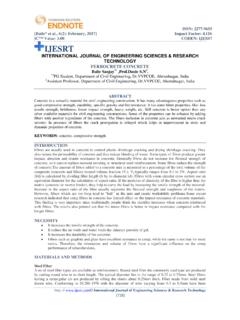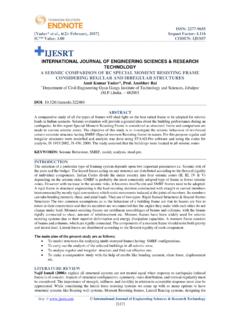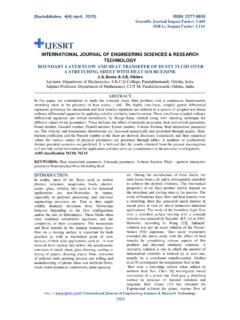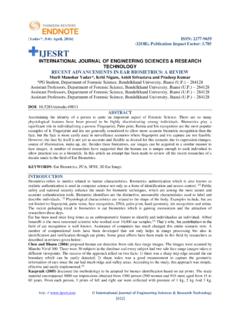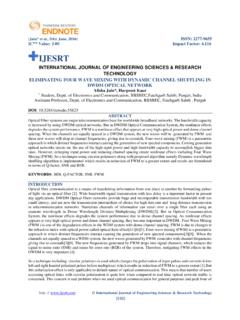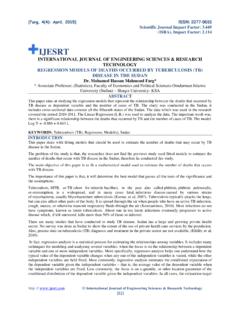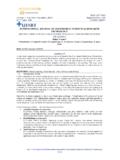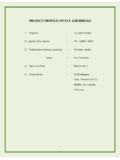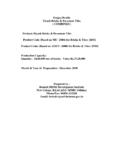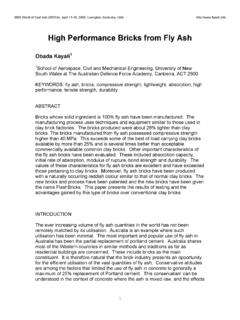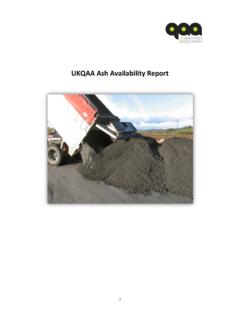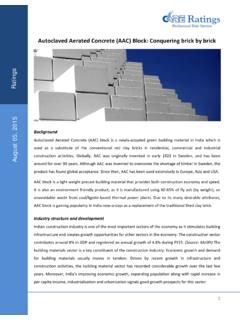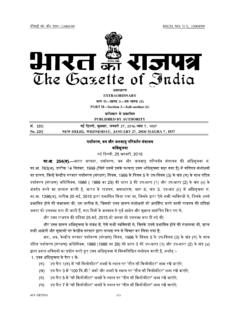Transcription of IJESRT
1 ISSN: 2277-9655 [Nagargoje* et al., 6(2): February, 2017] Impact Factor: IC Value: CODEN: IJESS7 http: // International Journal of Engineering Sciences & Research Technology [715] IJESRT INTERNATIONAL JOURNAL OF ENGINEERING SCIENCES & RESEARCH TECHNOLOGY NEED OF fly ash BRICK IN TODAYS CONSTRUCTION Shashikant *1 , Jaydeep 1 Assistant Professor, Department of Civil Engineering, JCOE Kuran, India, 2 Assistant Professor, Department of Civil Engineering,VCET Vasai , India, ABSTRACT Brick is the oldest manufactured building material, and much of its history is lost in antiquity.
2 The oldest burnt or fired bricks have been found on the sites of the ancient cities of Babylonia, some of which are estimated to be about 6000 years old. Clay bricks are used in a wide range of buildings from housing to factories. But while using clay bricks the thousands of acres top layer of soil dug out for brick manufacturing and this affect on top layer of soil, also for manufacturing of clay brick required more time therefore considering future scope of brick we can use fly ash in brick for better mechanical properties & large quantity production in less time with economy.
3 KEYWORDS: shearmodel,shear span to depth ratio(a/d). INTRODUCTION The180 billion tones of common burnt clay bricks are consumed annually, approximately 340 billion tones of clay about 5000 acres of top layer of soil dug out for bricks manufacture, soil erosion, emission from coal burning or fire woods which cause deforestation are the serious problems posed by brick industry. The above problems can be reduced some extent by using fly ash bricks ,Since 60% of country s electricity comes from coal based power station, thecountry has a huge stock of fly ash amounting to 60 million tones annually.
4 Despiteall the efforts present scenario is not too encouraging as only 5% of country s totalash has been consumed in different sectors. fly ash is comprised of the non-combustible mineral portion of coal. When coal is consumed in a power plant, it is first ground to the fineness of powder. Blown into the power plant s boiler, the carbon is consumed leaving molten particles rich in silica, alumina and calcium. These particles solidify as microscopic, glassy spheres that are collected from the power plant s exhaust before they can fly away hence the product s name: fly ash .
5 After mixing, the mixture is shifted to the hydraulic Brick Making machines. The bricks are carried on wooden pellets to the open area where they are dried and water cured for 14-21 days. The bricks are tested and sorted before dispatch. MATERIALS fly ash based building products are manufactured by using Major percentage of fly ash generated from Thermal Power stations who uses Boiler & captive power plant produces bulk quantity of fly ash our country. Other raw materials used along with fly ash are lime, calcined gypsum, cement and sand, with requisite quantity of water is mixed.
6 The percentage of above material in brick manufacturing depending on various factors such as, fineness of fly ash , moisture content, size of particles and strength, water absorption, durability and use. MANUFACTURING PROCESS fly ash , hydrated lime, grit, cement and gypsum are manually fed into a pan mixer where water is added in the required proportion for intimate mixing. The proportion of the raw material is generally depending upon the quality of raw materials. After mixing, the mixture is shifted to the hydraulic Brick Making machines.
7 The bricks are carried on wooden pellets to the open area where they are dried and water cured for 14-21 days. The bricks are tested and sorted before dispatch. ISSN: 2277-9655 [Nagargoje* et al., 6(2): February, 2017] Impact Factor: IC Value: CODEN: IJESS7 http: // International Journal of Engineering Sciences & Research Technology [716] Fig. 1 manufacturing process of fly ash brick Chemically, fly ash is a Pozzolane. When mixed with lime (calcium hydroxide), Pozzolane combine to form cementatious compounds. Concrete containing fly stronger, more durable, and more resistant to chemical , fly ash also pays dividends for concrete production.
8 Because fly ash particles are small, they effectively fill voids. Because fly ash particles are hard and round, they have a ball bearing effect that allows concrete to be produced using less water. Both characteristics contribute to enhanced concrete workability and durability. Finally, fly ash use creates significant benefits for our environment. fly ash use conserves natural resources and avoids landfill disposal of ash products. By making concrete more durable, life cycle costs of roads and structures are reduced.
9 Furthermore, fly ash use partially displaces production of other concrete ingredients, resulting in significant energy savings and reductions in greenhouse gas emissions. Fig. 2 fly ash brick Masonry at Palghar. ISSN: 2277-9655 [Nagargoje* et al., 6(2): February, 2017] Impact Factor: IC Value: CODEN: IJESS7 http: // International Journal of Engineering Sciences & Research Technology [717] Fig. 3 fly ash brick Masonry at Boisar. INSPECTION AND QUALITY CONTROL The Bureau of Indian Standards has formulated and published the specifications for maintaining quality of product and testing purpose.
10 IS: 12894: 2002. According to IS code the test procedure for compressive strength and water absorption is same as clay brick (IS 3495:1992).As per IS: 12894: 2002 The compressive strength of fly ash brick is divided in to four classes, class-I - 7N/mm2, class-II - 10N/mm2, class-III - 15N/mm2, class-IV -20N/mm2, and average water absorption for class up to 10N/mm2 not more than 20%. For higher class N/mm2&20N/mm2 not more than 15%. Whereas for clay brick (IS 3495:1992). The compressive strength is classified in to three classes.
